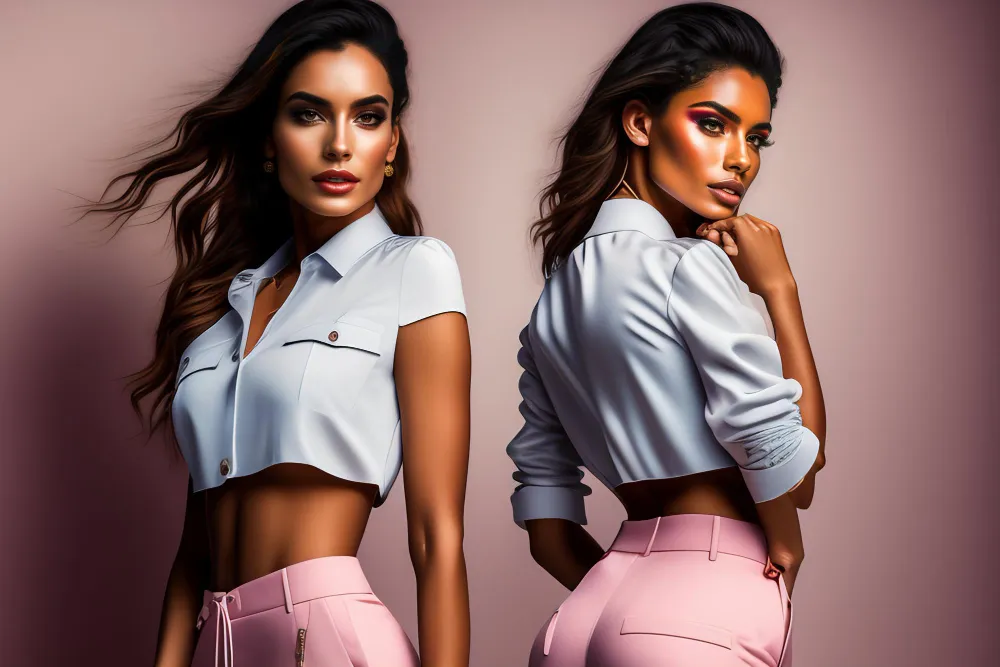
In an era where Artificial Intelligence (AI) has become the buzzword of the tech industry, it’s almost inevitable that other industries are hit by the same concept. One of the most notorious areas is the modelling industry and the use of AI in creating the ideal model. Tensions are rising around the industry where human models are being actively replaced by AI models, or at the least, their likeness is copied and used without consent and adequate compensation.
The Ethical Dilemma of AI Computer-Generated Models
Formed in the Netherlands, Lalaland.ai is the leading AI tool for bringing models to life. Their models are entirely computer-generated, and any amount of customisation is possible. Lalaland’s creator, Michael Musandu, observed the modelling industry’s lack of diversity and opportunities for people of colour. His solution brought the conversation to life–are AI models ethical?

That depends on the usage and creation. Some AI models are based on real models; their real-life counterparts are paid whenever their AI models are used for shoots. However, this isn’t the case for most AI usage in the modelling industry. More so-called influencers that do not exist are coming up and supermodels make up most of them.
Who Gets Paid Then?
AI models are undeniably a cheaper alternative. They don’t require any makeup artists, stylists or photographers. This implies that, including real-life models, people in those roles will be out of commission. Who gets paid, then? The industry would not be the same without that hard work and authenticity. Hard work is half the beauty of modelling and fashion. People are the soul of pretty much any job, and ridding photographers, makeup artists, and stylists would remove the creativity from the fashion industry. The vision gets eliminated, and all that’s left is a soulless model. Is that what people really want out of fashion?

Is It Actually More Representation?
Given the inherently artificial nature of AI models, the representation is cancelled out. Models of different skin tones, body sizes, body shapes, and other features deserve to be in the spotlight and paid for their work. Making more AI models is a hypocritical approach to representation. It ignores the aspiring real-life models who are waiting for this exact opportunity. Moreover, it seems dishonest of the fashion industry, which is meant to be for the people, to put something fake in the spotlight rather than someone working hard to achieve that role.
A classic case of this is the jeans company, Levi Strauss, facing criticism for implementing AI models in their portfolio to showcase diversity in their fashion. They intended to represent how their jeans would look on models of different sizes and shapes, but this directly opposed their existing motto of “diversity, equity and inclusion”. Levi Strauss then commented that AI models would not substitute human models to uphold their motto. However, if they had fulfilled their AI program and the models were realistic, the general public would be fooled into believing that Levi Strauss is an inclusive company.

What’s The Positive Side of AI Fashion Models?
Despite the backlash, AI fashion models have brought light to the underrepresentation of people of colour models as well as plus-sized models. It could also compensate the real-life models after using their likeness for modelling purposes. It also fights the biases towards traditional models, who are significantly skinnier, with paler skin tones, and unrealistically unblemished. This creates a stream of income for a diverse range of models from different communities. Moreover, the usage of AI fashion models promotes sustainability and reduces waste created by the one-time usage of fashion products.
How Can We Improve AI in The Fashion Industry?
The AI behind these fashion models should always involve real-life counterparts that will gain income from each usage. The main criticism is that they are underpaying and not involving their real-life counterparts and underrepresented communities in the fashion industry are already significantly underpaid. Companies should take criticism as a direction, a guiding light to understand the concerns, and instead take a step towards progress and inclusivity. It should lead the movement rather than hinder it.
Related article: OpenAI revealed its text-to-video model ‘Sora’

